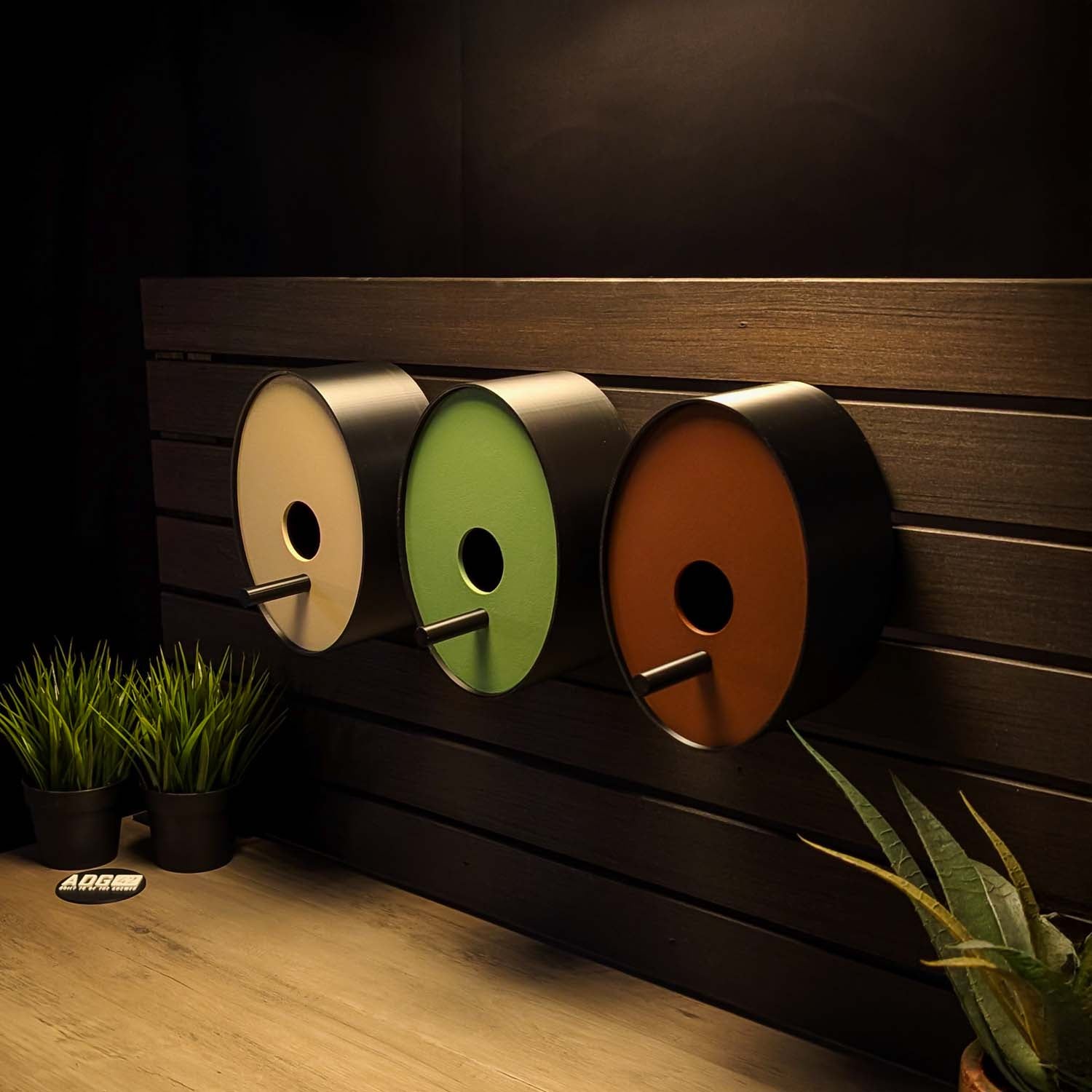TV Jargon Explained for Dads!
Hey Dads, football season is around the corner and with the price of tickets these days, it’s best to have a good TV! In this guide, we will take you on a journey through the world of television technology, demystifying the jargon and helping you make informed decisions. By the end of this guide, you'll be well-equipped to find your ideal TV, tailored precisely to your preferences and budget. So, let's embark on this exciting exploration of the TV world and discover your ultimate entertainment companion. Let’s Go!
Types of TVs:
- LED/LCD TVs: LED (Light Emitting Diode) or LCD (Liquid Crystal Display) TVs are the most common and affordable type. They use an LCD panel and LED backlighting to produce images. They offer good picture quality and are energy-efficient.
- OLED TVs: OLED (Organic Light Emitting Diode) TVs offer stunning picture quality with deep blacks and vibrant colors. Each pixel can be individually turned on or off, creating true blacks and better contrast. However, OLEDs tend to be more expensive than LED/LCD TVs.
- QLED TVs: QLED (Quantum Dot Light Emitting Diode) TVs are a variation of LED/LCD TVs that use quantum dots to enhance color and brightness. They offer better color reproduction and brightness compared to traditional LED/LCD TVs.
- Mini-LED TVs: Mini-LED TVs are an advanced version of LED/LCD TVs with smaller LED backlighting zones, offering better contrast and local dimming capabilities for improved picture quality.
- MicroLED TVs: MicroLED TVs use tiny self-emitting LEDs, similar to OLED, but with even better brightness and longevity. However, they are currently extremely expensive and mostly available in larger sizes.
Understanding TV Specs:
- Resolution: Resolution refers to the number of pixels on the screen. Common resolutions include:
- HD (High Definition): 720p
- Full HD: 1080p
- 4K Ultra HD: 2160p (four times the pixels of Full HD)
- 8K Ultra HD: 4320p (four times the pixels of 4K)
For most average-sized TVs, 4K Ultra HD is recommended as it provides a good balance of picture quality and affordability.
- Refresh Rate:
Refresh rate is measured in Hertz (Hz) and indicates how many times per second the image on the screen refreshes. Common refresh rates are 60Hz and 120Hz. Higher refresh rates can reduce motion blur during fast-moving scenes, making them ideal for gaming and sports.
- HDR (High Dynamic Range):
HDR enhances the contrast between the darkest and brightest parts of an image, resulting in more lifelike and detailed visuals. Look for TVs with HDR10 or Dolby Vision support for the best HDR experience.
- Smart TV:
Smart TVs have built-in internet connectivity and pre-installed apps like Netflix, YouTube, and more. They allow you to stream content directly without the need for additional devices.
Best TV Specs for Watching Live Sports:
- Refresh Rate: For watching fast-paced sports, a higher refresh rate is beneficial to reduce motion blur during rapid movements. Look for TVs with a 120Hz or higher refresh rate.
- Response Time: A fast response time is crucial to minimize motion smearing during sports action. Look for TVs with a response time of 5ms or lower.
- HDR Support: High Dynamic Range (HDR) enhances the brightness and contrast of the image, making the visuals more vibrant and detailed. HDR support, especially HDR10+, can make sports broadcasts more engaging.
- Wide Viewing Angle: If you often watch sports with a group of people, a TV with a wide viewing angle is important to maintain image quality and color accuracy from various seating positions.
Best TV Specs for Watching Movies:
- Resolution: For an immersive movie-watching experience, a 4K Ultra HD resolution is recommended. 4K provides higher detail and clarity, bringing out the most in high-quality movie content.
- Contrast Ratio: A high contrast ratio is essential for watching movies, especially in dark scenes. OLED TVs have infinite contrast ratios, providing true blacks and excellent contrast.
- HDR and Dolby Vision Support: HDR with Dolby Vision support delivers a wider range of colors and increased brightness levels, enhancing the cinematic experience and making movies look more lifelike.
- Local Dimming: TVs with local dimming technology can individually control the brightness of different areas of the screen, creating deeper blacks and better contrast in dark scenes.
- Audio Quality: Consider investing in a soundbar or a TV with good built-in speakers to complement the visual experience with high-quality sound.
Overall, a TV with a combination of 4K resolution, HDR with Dolby Vision, and good audio will provide an outstanding movie-watching experience. On the other hand, for live sports, prioritize a TV with a higher refresh rate, fast response time, and good HDR support for more vivid and smooth action-packed visuals.
More isn't always better
Here are some common misconceptions about TV specs, including specs that are often overrated:
- Resolution Beyond 4K: While 8K TVs do offer a higher resolution than 4K, the difference in picture quality is often not noticeable for typical TV sizes in average viewing distances. Moreover, there is limited native 8K content available, and the price premium for 8K TVs can outweigh the benefits for most consumers.
- Refresh Rate Above 120Hz: Manufacturers often market TVs with refresh rates higher than 120Hz, such as 240Hz or 480Hz. However, these numbers are achieved through interpolation and not true refresh rates. In most cases, a 120Hz refresh rate is sufficient for smooth motion during fast-paced content.
- Contrast Ratio (Dynamic vs. Static): Some manufacturers advertise dynamic contrast ratios, which are artificially inflated and do not represent the true capability of the TV. Static contrast ratios are more accurate and indicative of the TV's real performance.
- Quantum Dot vs. OLED: Quantum Dot technology can enhance color reproduction in LED/LCD TVs, but it is sometimes promoted as a comparable alternative to OLED. While Quantum Dot (QLED) can improve LED/LCD performance, OLED still offers superior contrast, black levels, and viewing angles.
- HDR on Budget TVs: HDR is an excellent feature, but on low-end or budget TVs, it may not have a significant impact due to limited peak brightness and color range. True HDR performance is typically found on higher-end models.
- Smart TV Interfaces: Smart TV interfaces are often a matter of personal preference, and the presence of a particular platform (e.g., Android TV, webOS, Tizen) does not guarantee a better TV. The performance of the smart TV interface can vary even within the same brand.
- Sound Quality of Ultra-Thin TVs: Ultra-thin TVs with slim bezels and bodies might compromise sound quality due to limited space for speakers. While some TVs claim advanced audio technologies, consider investing in a separate sound system or sound-bar for an improved audio experience.
- High Wattage Audio Output: Some TVs boast high wattage audio output, but wattage alone does not indicate sound quality. The placement and design of speakers, along with advanced audio processing, are more important factors in determining audio performance.
- Extreme Gaming Features for Casual Gamers: TVs with HDMI 2.1 and gaming-focused features like Variable Refresh Rate (VRR) and Auto Low Latency Mode (ALLM) are ideal for serious gamers. Casual gamers may not notice significant benefits and may not require the additional cost associated with these features.
Remember that while TV specs are essential, they don't tell the whole story about picture quality, audio, and overall user experience. It's crucial to read reviews, compare real-world performance, and consider your specific viewing habits and needs before making a purchase.
Size and Location
The positioning of a TV in a room and choosing the appropriate TV size depends on various factors, including the room layout, viewing distance, and personal preferences. Here are some general guidelines to consider:
- Viewing Distance: The viewing distance refers to the space between the TV and the seating area. A common rule of thumb is that the viewing distance should be approximately 1.5 to 2.5 times the diagonal screen size of the TV. For example, if you have a 55-inch TV, the ideal viewing distance would be around 6.9 to 11.5 feet (2.1 to 3.5 meters).
- TV Height: The TV should be positioned at eye level when seated. This means the center of the screen should be at or just below eye level. If the TV is too high or too low, it can cause neck strain and discomfort during prolonged viewing sessions.
- Room Layout: Consider the layout of your room and the location of windows to minimize glare and reflections on the TV screen. Placing the TV opposite large windows or bright light sources can negatively impact the viewing experience.
- TV Size vs. Room Size: The TV size should be proportional to the size of the room and the seating distance. For smaller rooms or shorter viewing distances, a TV in the range of 32 to 55 inches is generally sufficient. For larger rooms and longer viewing distances, consider larger TVs, such as 65 inches and above, for a more immersive experience.
- Viewing Angle: Ensure that the TV is positioned so that everyone in the room has a comfortable viewing angle without having to strain their necks. In rooms where multiple seating positions are used regularly, a swiveling TV mount can be helpful.
- Wall Mount vs. TV Stand: Wall-mounting the TV can save space and provide a clean look, but ensure it is securely attached to a wall stud or a proper wall-mount bracket. If using a TV stand, make sure it's sturdy and can support the TV's weight.
- Acoustic Considerations: For better audio performance, consider the placement of speakers. If you are using a soundbar or external speakers, make sure they are positioned optimally for the best audio experience.
Remember, these are general guidelines, and personal preferences play a significant role in determining the ideal TV placement and size. If possible, visit a showroom to see how different TV sizes look at various viewing distances. Ultimately, the goal is to find a setup that provides a comfortable and enjoyable viewing experience for you and your household.
As you embark on your TV-buying journey, remember that each decision should be tailored to your specific needs, preferences, and budget. Take advantage of professional reviews and user feedback to gather real-world insights and ensure you're making an informed choice. Whether you're a sports enthusiast, a movie lover, or an avid gamer, a well-chosen TV can elevate your entertainment experience to new heights.
As technology continues to evolve, keep an eye out for new advancements and features that might enhance your viewing pleasure. And most importantly, enjoy the immersive and captivating world of entertainment that your new TV will bring into your home. Happy TV shopping!
Check out some of our dad gear here Active Doodie® Dad Gear.
For More Information check out our YouTube Channel or see us on Instagram

















